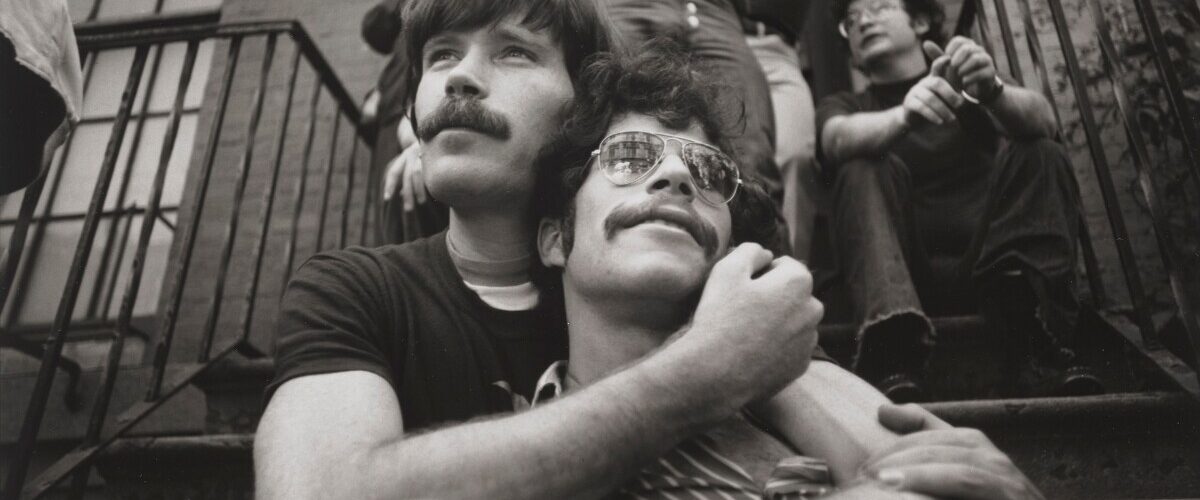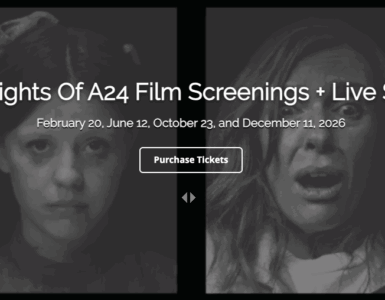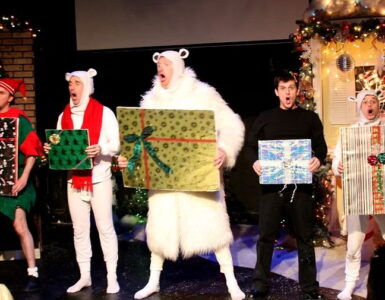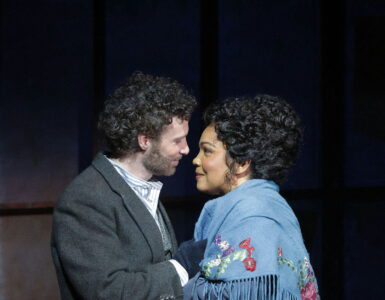
Two new exhibitions:
Immerse yourself in the stories of LGBTQ+ artists and explore vivid accounts of queer representation with two exhibitions now on view: Queer Lens: A History of Photography and $3 Bill: Evidence of Queer Lives. Both exhibitions are on view at the Getty Museum from June 17 -September 28, 2025.
These exhibitions at the Getty Center celebrate two centuries of LGBTQ+ history, people, and culture. Throughout the summer you can explore vivid accounts of queer representation through art and ephemera, as well as attend free performances, talks, and films. Celebrate Pride with festivities across Los Angeles—or wherever you may be.
Queer Lens: A History of Photography
From the press release:
Since the mid-19th century, photography has served as a powerful tool for examining concepts of gender, sexuality, and self-expression. The immediacy and accessibility of the medium has played a transformative role in the gradual proliferation of homosocial, homoerotic, and homosexual imagery. Despite periods of severe homophobia, when many photographs depicting queer life were suppressed or destroyed, this exhibition brings together a variety of evidence to explore the medium’s profound role in shaping and affirming the vibrant tapestry of the LGBTQ+ community.
In the Queer Lens exhibition, we openly acknowledge the complex history of the word “queer” in our wall text and talk about its reclamation by the LGBTQ+ community. In this context, it is not derogatory, but a word of inclusivity and empowerment. Additionally, “Queer” is gender neutral and includes those who are left out of LGBT identifiers (such as intersex). We use the word with intentionality, awareness, and respect.
Extended Hours at The Getty
If you want to experience a glorious sunset, you can at the Getty. They’ve extended their hours to 9 pm on Saturdays, 6:30 pm every other day (except Mondays, when the museum is closed). Plus they have a new bar and lounge, the Trellis. (
Related playlist:
Here and Queer. Artists featured in $3 Bill share songs inspired by the show.
About the exhibitions:
Celebrate love at Getty with Queer Lens: A History of Photography, on view June 17 -September 28, 2025. This is the first major exhibition in the United States to survey the history of photography through a queer lens, bringing together a variety of works that explore photography’s profound role in shaping and affirming the vibrant tapestry of the LGBTQ+ community.
“Queer Lens takes a theme that is often hidden and gives it a high level of visibility. The exhibition explores how, despite multiple forms of discrimination, LGBTQ+ individuals have shaped art and culture in innumerable ways, and how photography was and continues to be a powerful tool in the representation of the queer experience. The exhibition also demonstrates the Getty Museum Department of Photographs’ commitment in recent years to collecting and exhibiting works by historically marginalized and underrepresented communities.”
Timothy Potts, Maria Hummer-Tuttle and Robert Tuttle, Director of the J. Paul Getty.
Bringing together more than 270 works—including vintage prints, books, magazines, and rare ephemera—the exhibition highlights photography’s unique role in shaping, preserving, and affirming the lives and experiences of LGBTQ+ individuals from the 19th century to today.
Pictured above: Gay Activists at First Gay Pride Parade, Christopher Street, New York (detail), 1970; printed 2021, Arthur Tress. Gelatin silver print. Getty Museum. Gift of David Knaus. © Arthur Tress Archive LLC.
The exhibition unfolds across eight chronological sections, tracing the dynamic intersection of queerness and image-making during each of these periods. From early homosocial portraiture to drag culture, the rise of the Gay Liberation Movement, and the creative resilience during the AIDS crisis, each section offers a vivid snapshot of LGBTQ+ life and love.
Homosocial Culture and Romantic Relationships
In the early 19th century, public life was defined by strict gender separation, except within the confines of marriage. During this era, the depiction of homosocial interactions and romantic relationships set the stage for later queer representations in art and society.
Language and Identity
The exhibition delves into the evolution of sexual orientation. In 1869, Hungarian journalist Karl-Maria Kertbeny published a pamphlet that introduced the terms “homosexual” and “heterosexual.” This breakthrough laid the groundwork for the binary system of sexual identity, marking the beginning of a division between straight and gay identities.
The Pansy Craze
Underground gay clubs and drag performances found a home in Prohibition era speakeasies in Los Angeles, New York, and San Francisco. This phenomenon, known as the “Pansy Craze,” pushed photographs of queer expression into the public eye, culminating in a vibrant urban landscape of self-expression.
Hiding in Plain Sight
Despite intense discrimination, many gay Americans found subtle ways to express their true selves. The exhibition features narratives of individuals who, while serving in uniform, established close-knit communities of friends and lovers. The 1930s and 1940s introduced photo booths and the Polaroid Land Camera, which provided gay individuals with essential privacy to capture clandestine moments of intimacy.
Rise of the Gay Liberation Movement
In the 1950s the first homophile groups were founded in the wake of the “Lavender Scare,” a decision to dismiss suspected gay people from their jobs with the U.S. government These groups advocated for gay rights while creating a sense of community through events and publications. On June 28, 1969, the police raided the Stonewall Inn, a gay bar in Greenwich Village. Its patrons fought back, and the ensuing five days of rioting led to the expansion of the gay liberation movement.
The AIDS Crisis
The 1980s brought the devastating impact of the AIDS crisis, deepening the stigmatization of the gay community. In 1987, the AIDS Coalition to Unleash Power, or ACT UP, was founded in angry response to the Reagan administration’s inaction and was spurred on by the culture wars over homosexuality, religion, art, and censorship.
Friends of Dorothy
Phrases such as “a friend of Dorothy” became covert signals that enabled gay men to safely identify themselves in public. One hundred portraits in this gallery celebrate the diversity and resilience of the queer community, while underscoring the importance and joys of queer kinship.
Things are Queer
Founded in 1990, the activist group Queer Nation led the effort to reclaim the word “queer” from a slur to a term of affirmation and empowerment. Queer photographers focused on making work that rejected traditional belief systems, cruel stereotyping, and racism.
The Future is Queer
At the threshold of the beginning of the second quarter of the twenty-first century, there has been an expansive growth of queer representation in contemporary photography. The works on display in this section epitomize the medium’s continuing appeal to those exploring queer identity, while also reflecting the Getty Museum’s ongoing commitment to curating an inclusive collection that honors previously marginalized voices.
Queer Lens: A History of Photography is curated by Paul Martineau, curator in the Department of Photographs.

$3 Bill: Evidence of Queer Lives
From the press release:
$3 Bill celebrates the contributions of LGBTQ+ artists in the last century. From pioneers who explored sexual and gender identity in the first half of the 20th century, through the liberation movements and the horrors of the HIV/AIDS epidemics, to today’s more inclusive and expansive understanding of gender, $3 Bill presents a journey of resilience, pride, and beauty.
In this exhibition, we openly acknowledge the complex history of the word “queer” in our wall text and talk about its reclamation by the LGBTQ+ community. In this context, it is not derogatory, but a word of inclusivity and empowerment. Additionally, “Queer” is gender neutral and includes those who are left out of LGBT identifiers (such as intersex). We use the word with intentionality, awareness, and respect.
Related events:
In tandem with the exhibition, Getty will host a vibrant slate of public programs—including talks, performances, and interactive workshops—highlighting queer voices in photography and beyond. These events complement both Queer Lens and the concurrent exhibition at the Getty Research Institute, $3 Bill: Evidence of Queer Lives.
A beautifully illustrated companion book by Paul Martineau and Ryan Linkof, published by the Getty Museum, further explores the themes and images from the exhibition.
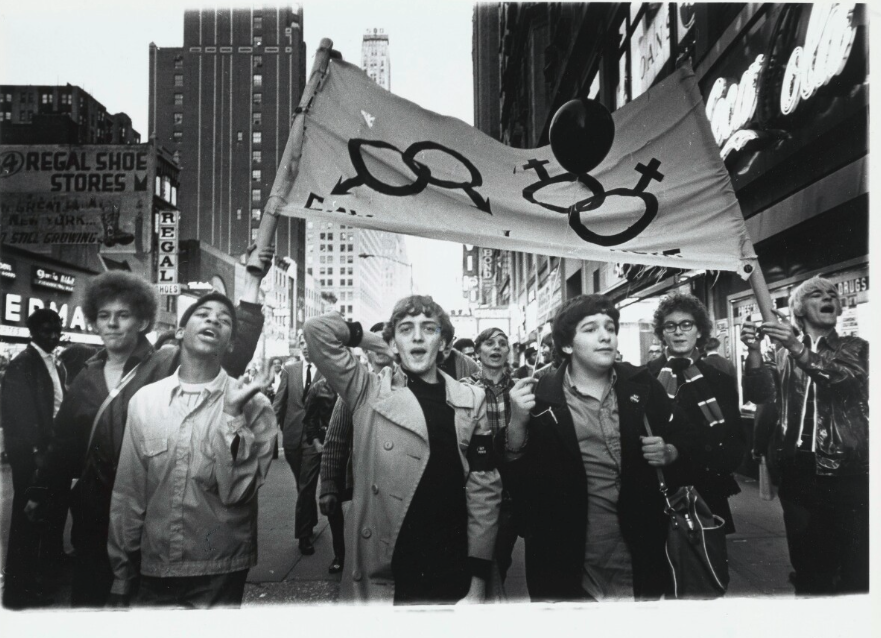
About the Getty:
The J. Paul Getty Museum collects Greek and Roman antiquities, European paintings, drawings, manuscripts, sculpture and decorative arts to 1900, as well as photographs from around the world to the present day. The Museum’s mission is to display and interpret its collections, and present important loan exhibitions and publications for the enjoyment and education of visitors locally and internationally. This is supported by an active program of research, conservation, and public programs that seek to deepen our knowledge of and connection to works of art.
Visiting the Getty Center
The Getty Center is open Tuesday through Sunday, 10am to 5:30pm. The Getty Center is open until 8pm on Saturdays, year-round. It is closed Mondays, Thanksgiving, December 25 (Christmas Day), and January 1. Admission to the Getty Center is always free, but a reservation is required for admission. Make reservations online or at (310) 440-7300. Parking is $25, $15 after 3pm, and $10 after 6pm. The Getty Center is at 1200 Getty Center Drive, Los Angeles, California.


